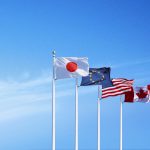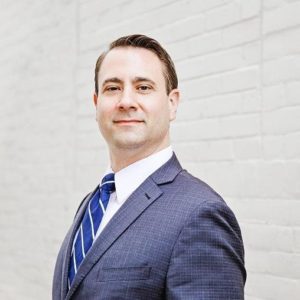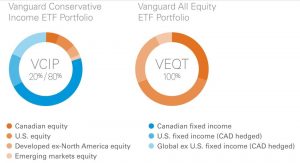 The investment industry is saddened to learn of the passing of Vanguard founder John C. Bogle today. A true giant of the industry, Bogle was virtually the creator of index mutual funds and ETFs, and passive investing in general. Below is the press release issued today by Vanguard, which we reprint in full. I have added a few subheads and made only very minor edits.
The investment industry is saddened to learn of the passing of Vanguard founder John C. Bogle today. A true giant of the industry, Bogle was virtually the creator of index mutual funds and ETFs, and passive investing in general. Below is the press release issued today by Vanguard, which we reprint in full. I have added a few subheads and made only very minor edits.
VALLEY FORGE, PA (January 16, 2019) — Vanguard announces the passing of John Clifton Bogle, founder of The Vanguard Group, who died today in Bryn Mawr, Pennsylvania. He was 89.
Mr. Bogle had legendary status in the American investment community, largely because of two towering achievements: He introduced the first index mutual fund for investors and, in the face of skeptics, stood behind the concept until it gained widespread acceptance; and he drove down costs across the mutual fund industry by ceaselessly campaigning in the interests of investors. Vanguard, the company he founded to embody his philosophy, is now one of the largest investment management firms in the world.
“Jack Bogle made an impact on not only the entire investment industry, but more importantly, on the lives of countless individuals saving for their futures or their children’s futures,” said Vanguard CEO Tim Buckley. “He was a tremendously intelligent, driven, and talented visionary whose ideas completely changed the way we invest. We are honored to continue his legacy of giving every investor ‘a fair shake.’”
Mr. Bogle, a resident of Bryn Mawr, PA, began his career in 1951 after graduating magna cum laude in economics from Princeton University. His senior thesis on mutual funds had caught the eye of fellow Princeton alumnus Walter L. Morgan, who had founded Wellington Fund, the nation’s oldest balanced fund, in 1929 and was one of the deans of the mutual fund industry. Mr. Morgan hired the ambitious 22-year-old for his Philadelphia-based investment management firm, Wellington Management Company.
Mr. Bogle worked in several departments before becoming assistant to the president in 1955, the first in a series of executive positions he would hold at Wellington: 1962, administrative vice president; 1965, executive vice president; and 1967, president. Mr. Bogle became the driving force behind Wellington’s growth into a mutual fund family after he persuaded Mr. Morgan, in the late 1950s, to start an equity fund that would complement Wellington Fund. Windsor Fund, a value-oriented equity fund, debuted in 1958.
In 1967, Mr. Bogle led the merger of Wellington Management Company with the Boston investment firm Thorndike, Doran, Paine & Lewis (TDPL). Seven years later, a management dispute with the principals of TDPL led Mr. Bogle to form Vanguard in September 1974 to handle the administrative functions of Wellington’s funds, while TDPL/Wellington Management would retain the investment management and distribution duties. The Vanguard Group of Investment Companies commenced operations on May 1, 1975.
The “Vanguard experiment”
To describe his new venture, Mr. Bogle coined the term “The Vanguard Experiment.” It was an experiment in which mutual funds would operate at cost and independently, with their own directors, officers, and staff—a radical change from the traditional mutual fund corporate structure, whereby an external management company ran a fund’s affairs on a for-profit basis.
“Our challenge at the time,” Mr. Bogle recalled a decade later, “was to build, out of the ashes of major corporate conflict, a new and better way of running a mutual fund complex. The Vanguard Experiment was designed to prove that mutual funds could operate independently, and do so in a manner that would directly benefit their shareholders.”
First index mutual fund in 1976
In 1976, Vanguard introduced the first index mutual fund — First Index Investment Trust — for individual investors. Ridiculed by others in the industry as “un-American” and “a sure path to mediocrity,” the fund collected a mere $11 million during its initial underwriting. Now known as Vanguard 500 Index Fund, it has grown to be one of the industry’s largest, with more than $441 billion in assets (the sister fund, Vanguard Institutional Index Fund, has $221.5 billion in assets). Today, index funds account for more than 70% of Vanguard’s $4.9 trillion in assets under management; they are offered by many other fund companies as well and they make up most exchange-traded funds (ETFs). For his pioneering of the index concept for individual investors, Mr. Bogle was often called the “father of indexing.”
1977: Direct to investors
Mr. Bogle and Vanguard again broke from industry tradition in 1977, when Vanguard ceased to market its funds through brokers and instead offered them directly to investors. The company eliminated sales charges and became a pure no-load mutual fund complex—a move that would save shareholders hundreds of millions of dollars in sales commissions. This was a theme for Mr. Bogle and his successors: Vanguard is known today for maintaining investment costs among the lowest in the industry.
A champion of the individual investor, Mr. Bogle is widely credited with helping to bring increased disclosure about mutual fund costs and performance to the public. His commitment to safeguarding investors’ interests often prompted him to speak out against practices that were common among his peers in other mutual fund organizations. “We are more than a mere industry,” he insisted in a 1987 speech before the National Investment Company Services Association. “We must hold ourselves to higher standards, standards of trust and fiduciary duty. Change we must—in our communications, our pricing structure, our product, and our promotional techniques.”
Mr. Bogle spoke frequently before industry professionals and the public. He liked to write his own speeches. He also responded personally to many of the letters written to him by Vanguard shareholders, and he wrote many reports, sometimes as long as 25 pages, to Vanguard employees — whom he called “crew members” in light of Vanguard’s nautical theme. (Mr. Bogle named the company after Admiral Horatio Nelson’s flagship at the Battle of the Nile in 1798; he thought the name “Vanguard” resonated with the themes of leadership and progress.)
In January 1996, Mr. Bogle passed the reins of Vanguard to his hand-picked successor, John J. Brennan, who joined the company in 1982 as Mr. Bogle’s assistant. The following month, Mr. Bogle underwent heart transplant surgery. A few months later, he was back in the office, writing and speaking about issues of importance to mutual fund investors. Continue Reading…









